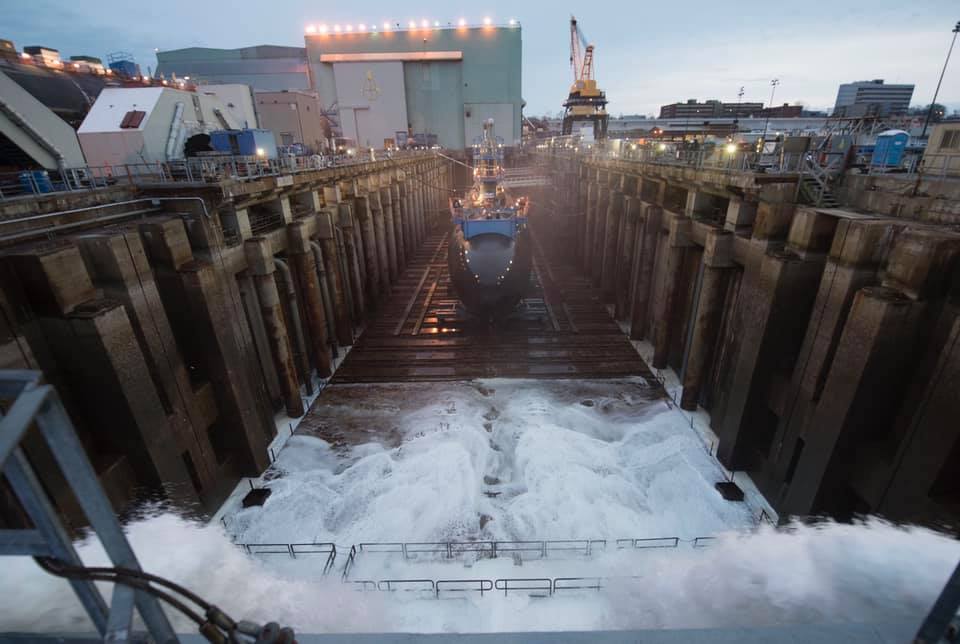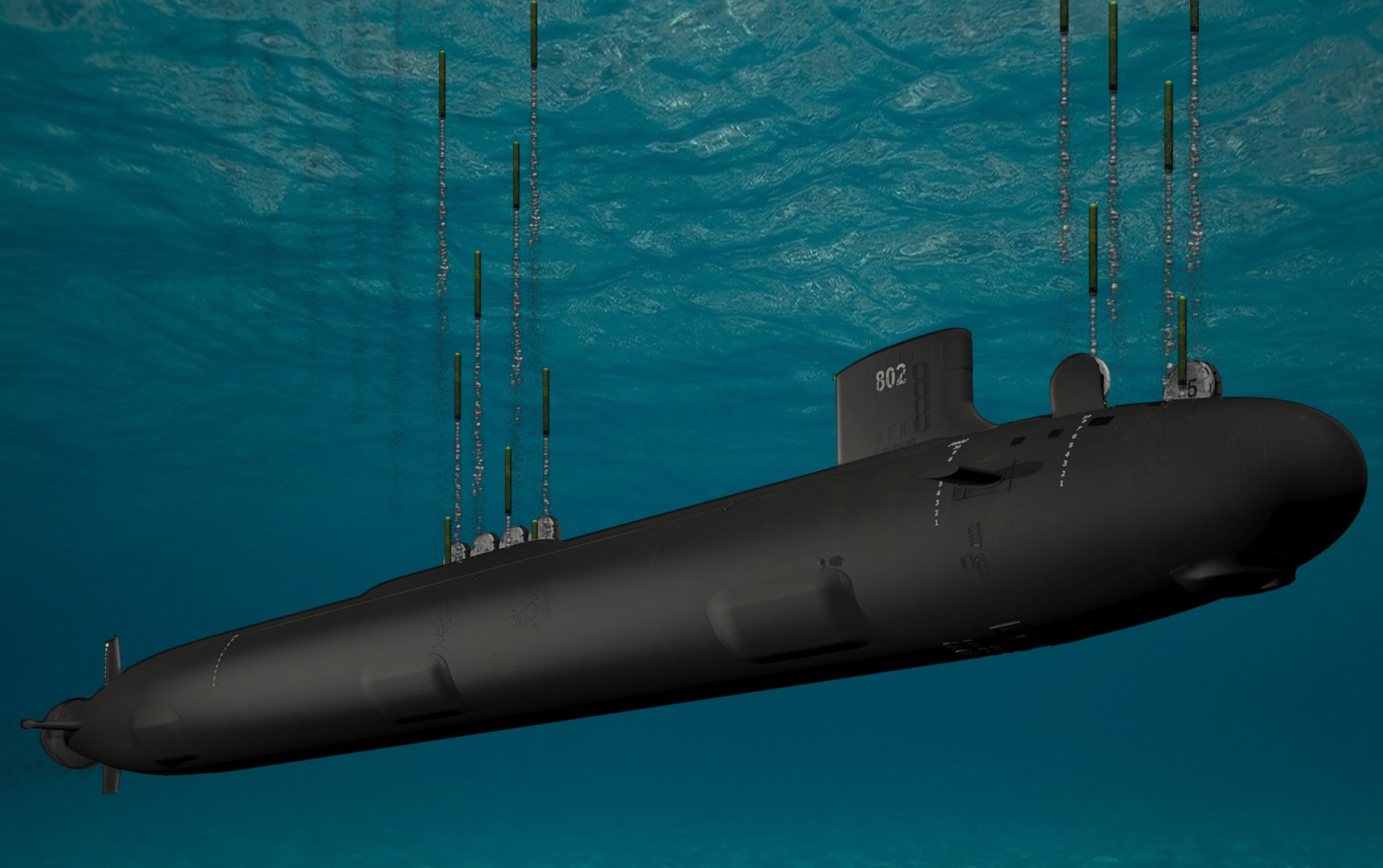
Sailors underway on submarines with steel from a company that pleaded guilty to providing the Navy with fraudulent materials aren’t at risk, the service’s top acquisition official told reporters on Thursday.
Assistant Secretary of the Navy for Research, Development and Acquisition James Geurts said the Navy had evaluated the potential risks for suspect steel that was used to build Navy submarines from a Washington state foundry owned by Bradken, Inc.
“We have done the work to understand any potential risk, and believe we have mitigated any potential risk for our in-service submarines,” Geurts said in response to a question to USNI News.
“It did cost us some time to go do the exploration to make sure that we were comfortable with the safety of our sailors.”
Earlier this week, Bradken Inc. entered a deal with federal prosecutors to pay $11 million as part of a deferred prosecution agreement over what government officials said was decades of providing fraudulent materials for the construction of Navy nuclear submarines.
The Kansas City-based company found that its foundry in Washington had falsified testing results for castings for Virginia-class submarines built by General Dynamics Electric Boat and Huntington Ingalls Industries Newport News Shipbuilding. Specifically, the Tacoma foundry’s director of metallurgy, Elaine Thomas, falsified test results to say substandard castings met the Navy’s standards for submarine construction.
“Thomas falsified results for over 200 productions of steel, which represent a substantial percentage of the castings Bradken produced for the Navy,” according to federal prosecutors.
The company discovered the fraud in 2017.
“At that time, a lab employee discovered that test cards had been altered and that other discrepancies existed in Bradken’s records,” according to prosecutors.
“While Bradken initially disclosed these findings to the Navy, it then made misleading statements suggesting that the discrepancies were not the result of fraud. Bradken admits that these misleading statements hindered the Navy’s investigation and its efforts to remediate the risks presented by Bradken’s fraud.”
Navy submarines have the most stringent requirements for construction to meet the service’s SUBSAFE standards. Developed after the 1963 loss of attack boat USS Thresher (SSN-593), the SUBSAFE program has a simple premise: a submarine must be able to get to the surface in the event of a problem. It’s unclear if any of the castings were SUBSAFE components.
Guerts said the Navy also evaluated submarines under construction for problems derived from the steel.
“We have done a sweep of any material that was in the queue for new construction submarines. That’s a little easier because it isn’t in the submarine yet, and we’re confident in the material for any of the new construction submarines,” he said.
“We are working closely with the company and have instituted additional audits and inspections in reviewing with them and Electric Boat to ensure that we won’t have a repeat of this.”
The foundry continues to make steel castings for both Electric Boat and Newport News.
Both companies said they are working to maintain the quality of the materials from Bradken.
“Electric Boat and its shipbuilders are committed to delivering the safest and most capable submarines to the Navy,” the company said in a statement to USNI News on Thursday.
“The company worked with the Navy to perform extensive testing and analysis to ensure the material provided by Bradken is technically acceptable for use.”
In a statement, an HII spokesperson said, “we are committed to building high-quality submarines for the U.S. Navy, and we take the safety of those who sail on our ships to be of the highest priority. We will continue to cooperate with the government, and we will continue to work with the Navy and our submarine building partner to deliver the highest quality submarines to the fleet.”

Underlying issues with the submarine supplier base is a key concern as the service is on the cusp of building the new class of Columbia nuclear ballistic missile submarines.
“We need to continue, at our level, with the Navy, with our submarines builders at Newport News and with Electric Boat, and through the entire supply chain, to ensure that we have the procedures to build the part right,” Guerts said.
Bradken’s plea follows other supplier base issues. In 2016, supplier Nuflo drew a Department of Justice investigation after poor welds were discovered on three submarines. In 2018, poor welds were found in quad-pack missile tubes constructed by BWX Technologies, resulting in a $27-million fix.
Geurts told reporters the lessons from past mistakes are being incorporated into the service moving forward.
“If you look back in the history of submarines, there has always been a keen awareness that we’re only as strong as the supplier base and as good as the parts that the suppliers are producing to put into our submarines,”
“Part of the challenge is that, as you try to bring that (industrial) base from a small number of submarines to two Virginias a year to now two Virginias a year plus Columbia, you really need to understand the extent of the supplier base’s readiness to get there and then controls in place to make sure we stay there.”
Over the last two years, the Navy has identified more than 300 critical suppliers and stepped up oversight of the vendors to keep the Columbia program – which the Navy has said repeatedly over the last decade was its highest acquisition priority – on track.
At least one lawmaker is calling for a hearing after the Bradken plea to take a look at the limited supplier base.
“We are dangerously reliant on sole-source companies,” House Armed Services seapower and projection forces subcommittee chairman Rep. Joe Courtney (D-Conn.) told The Day of New London this week.
“Aside from the cost factor, you really lose your leverage because you’re limited in terms of no market.”





